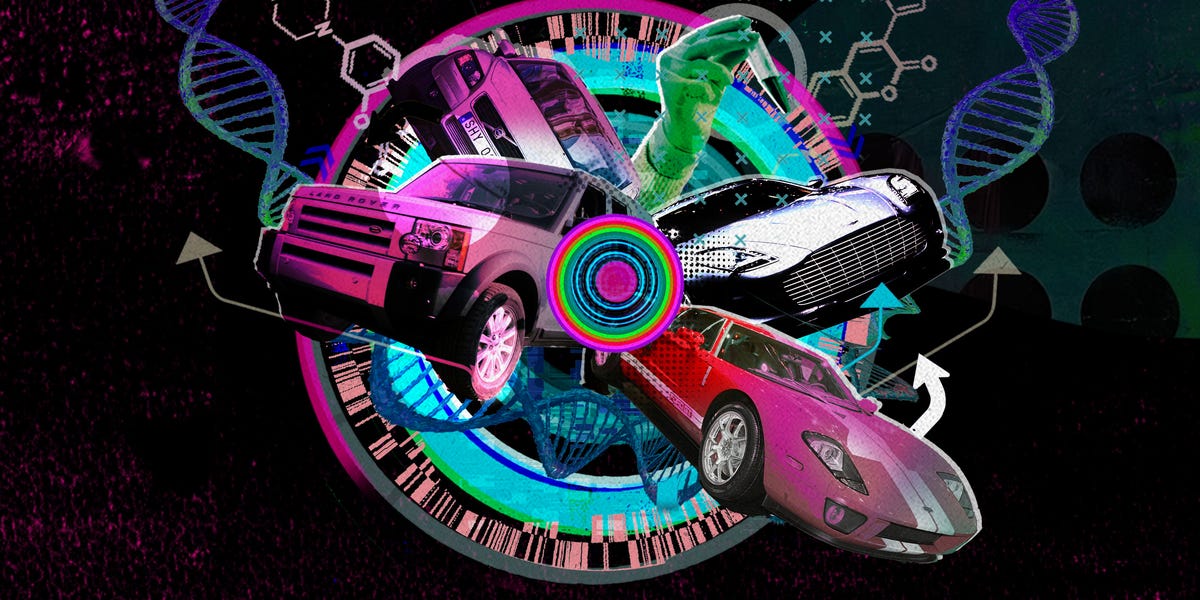[ad_1]
The Premier Automotive Group—or PAG, for short—was a division of the Ford Motor Company created to oversee its high-end brands like Aston Martin, Jaguar, Land Rover, Lincoln, and Volvo in the late 1990s and early 2000s. While each brand had its own unique elements, there was a lot of parts sharing, even with Ford’s less premium brands.
The Volvo C30 was one interesting example. A luxury hatchback that pulled parts from a variety of other models, the C30 was based on the Ford C1 platform. This platform was first used on the Ford C-Max MPV in Europe before underpinning more luxurious offerings. The platform ended up as the base for everything from the Mazda CX-7 to the Volvo S40.
This shared platform meant that many of the suspension and braking components for the C30 ended up also being shared. For example, the manual version had the clutch master cylinder from the Mazda5 while multiple brake components and the strut mounts came from the Mazda3. Some of those brake components—like the brake pads—ended up being used for years, even appearing in models like the Ford EcoSport. Its control-arm bushings were shared with the Ford Focus.
Volvo wasn’t the only one to benefit from Ford’s parts bin. Small parts, like the brake light switch found in the late-2000s Ford Fusion, made their way into supercars like the Ford GT and the Aston Martin One-77. The Aston Martin Vantage ended up with a variety of parts from more pedestrian Ford brands as well. Things like the cabin air filter are shared with the Mazda RX-8, while the cooling-system thermostat can be found in the Ford Thunderbird and Lincoln LS.
The Vantage also received parts from other PAG brands. The emergency brake pads are shared with the Jaguar S-Type, while the key fobs came from a variety of Volvos. The front brake pads on the V8 Vantage were a common Brembo design shared with a variety of sports cars like the Chevrolet Corvette and Ferrari 612 Scaglietti. The rear brake pads were similarly a Brembo design, and they did cross over to some in-house models like the Ford GT and Jaguar S-Type. Interestingly, they also eventually made their way to the Tesla Model S.
It is well known that the V-12 found in Aston Martins of the early 2000s is based on the combination of two Ford Duratec V-6s. So many of these components are shared that those who have gotten to the point of rebuilding one of these engines can occasionally pull Ford and Mazda parts to save money. Many of the seals are a direct transfer between the engines, so something like a rear crankshaft seal from the V-6 in a Mazda MPV will also fit the V-12 in an Aston Martin DB9 or One-77. While seals are often shared among many different types of engines, engine shops have reported being able to pull parts like connecting rods from the 3.0-liter V-6 found in vehicles like the Mazda MPV and use them directly in the Aston Martin V-12. Looking at a used connecting rod from that V-12 that has the Ford logo directly inscribed on it, this isn’t surprising.
While brands like Aston Martin and Jaguar were sold during the dismantling of the Premier Automotive Group between 2006 and 2010, some of the parts developed way back then have made it to modern vehicles from these brands. So, someone looking under the rear of their new Jaguar F-Type may notice that the stabilizer bar links look very similar to the ones they might have seen way back in 2002 on the Ford Thunderbird. Once the day comes that the HVAC system on that F-Type needs servicing, owners will find comfort in the fact that they can fit the blower motor resistor from the 2005 Land Rover LR3 or the Range Rover Sport of the same generation.
The Premier Automotive Group was an interesting experiment in parts sharing. Especially since—and this likely wasn’t the intention—it will help keep costs down for enterprising owners looking to rebuild that Aston Martin V-12.
This content is created and maintained by a third party, and imported onto this page to help users provide their email addresses. You may be able to find more information about this and similar content at piano.io
[ad_2]
Source link





More Stories
What Are the Leading Causes of Car Accidents in Nevada?
Abandoned History: The Life and Times of Edsel, a Ford Alternative by Ford (Part X)
French Art Deco Designs | The Jalopy Journal The Jalopy Journal